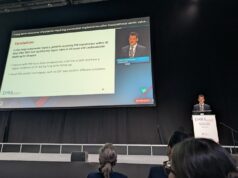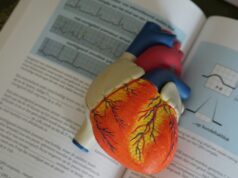
A first-of-its-kind study, published on 11 November in Circulation, has found that foetal magnetocardiography (fMCG)-the magnetic analogue of electrocardiograms (ECG)-may help to diagnose and possibly treat in utero long QT syndrome. Results using fMCG show 89% accuracy diagnosing long QT syndrome in the womb.
“Long QT syndrome is among the most common causes of sudden cardiac death in the young. Although its role in sudden infant death syndrome has been known for more than a decade, a very recent study by Crotti et al (JAMA. 2013;309:1473-1482) suggests that long QT syndrome may also be responsible for >10% of unexplained foetal death,” write author of the study Bettina F Cuneo, Department of Pediatrics, Children’s Hospital of Colorado, Universitiy of Colorado School of Medicine, Denver, USA, and others.
This study, according to Cuneo et al, aimed to evaluate the efficacy of fMCG for diagnosis and prognosis of foetuses at risk of long QT syndrome in a sizable population. “Until now, physicians were unable to diagnose long QT syndrome until after birth,” said Ronald T Wakai, principal investigator of the study and a professor of medical physics at the University of Wisconsin School of Medicine and Public Health in Madison, USA. “Our study shows that you can diagnose the condition in utero and identify which foetuses are most likely to have life-threatening arrhythmia. We also showed that once detected the arrhythmia can be effectively treated in utero.”
Cuneo et al evaluated 30 pregnancies from 1996 to 2012 in the USA and Japan. They chose patients based on a family history of long QT syndrome, unexplained sudden death of a sibling during infancy or findings of a prenatal long QT syndrome rhythm (including low fetal heart rate, ventricular tachycardia or anti-Ro/La antibody-negative second degree atrioventricular block with a structurally normal heart diagnosed by foetal echocardiography).
Foetal MCG was performed using a 37-channel biomagnetometer (Magnes, 4D Neuroimaging) at the University of Wisconsin in Madison, USA, and 64-channel biomagnetometers (MC-6400, Hitachi) at the University Tsukuba, Japan, and the National Cerebral and Cardiovascular Center in Osaka, Japan.
Long QT syndrome was diagnosed in 21 (70%) of the foetuses. Four foetuses had frequent episodes of Torsade de Pointes which were present 22–79% of the time. “Using a threshold of corrected QT=490ms, fMCG accurately identified long QT syndrome foetuses with 89% sensitivity and 89% specifity in 36 sessions,” write Cuneo et al.
In conclusion, the researchers write: “Foetal MCG findings not only prompted successful in utero pharmacological treatment to restore sinus rhythm and postpone the delivery of a premature foetus, but also guided anticipatory neonatal care.”
They also acknowledged that due to “costs and complexity of instrumentation” fMCG is not “readily accessible to clinicians” but a new technology based on atomic magnetometers could potentially “rectify this situation”.
The US National Institutes of Health funded the study.












